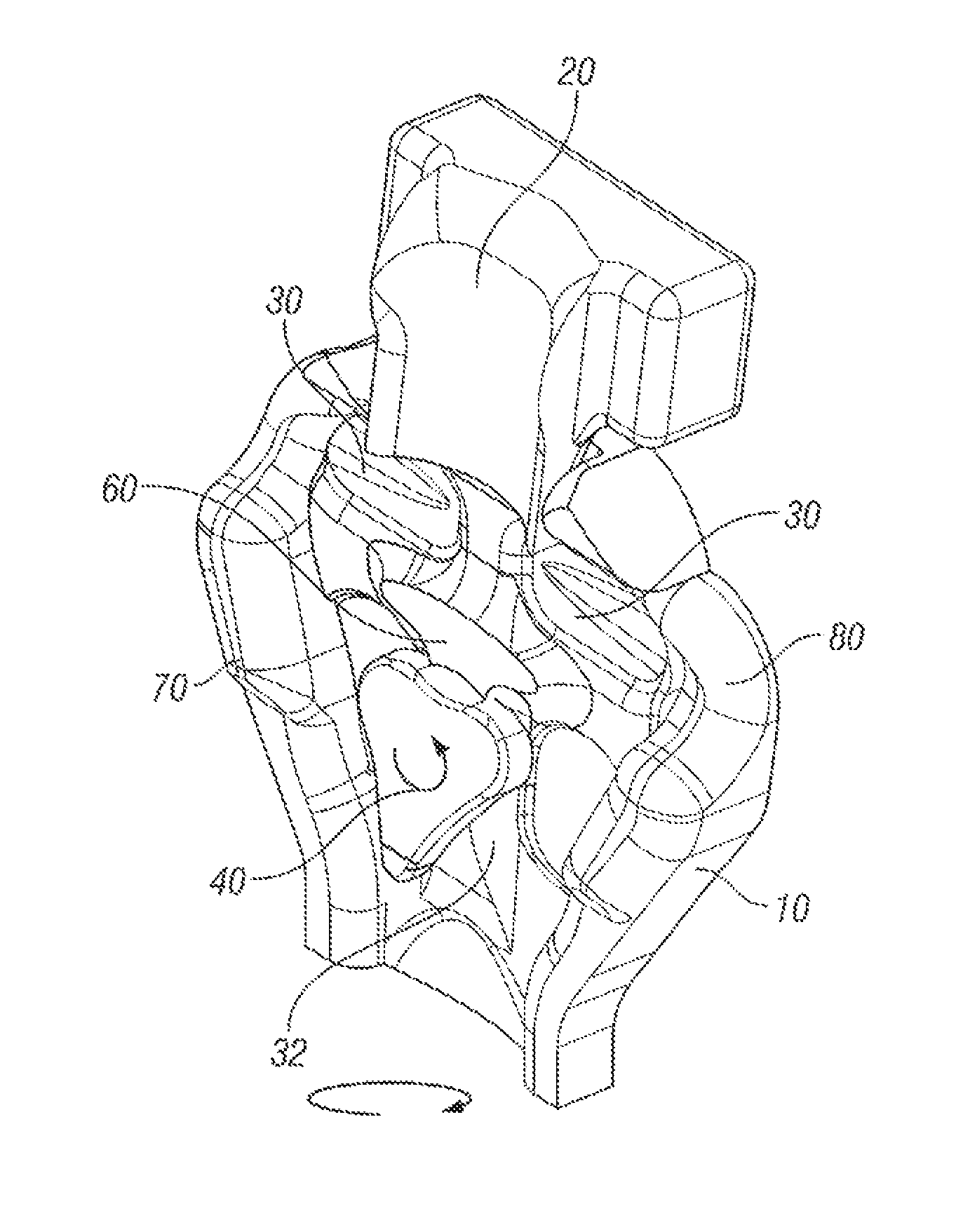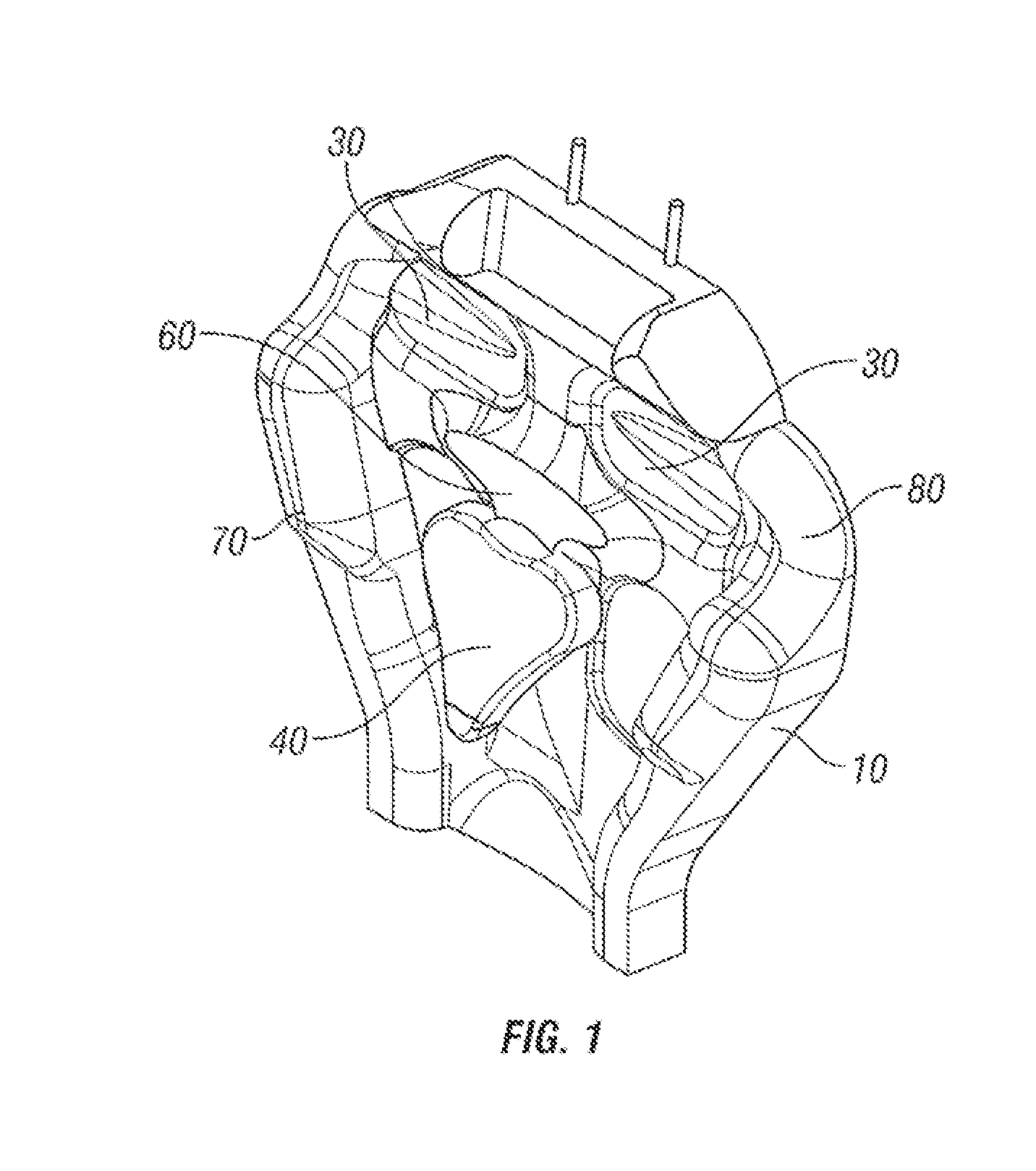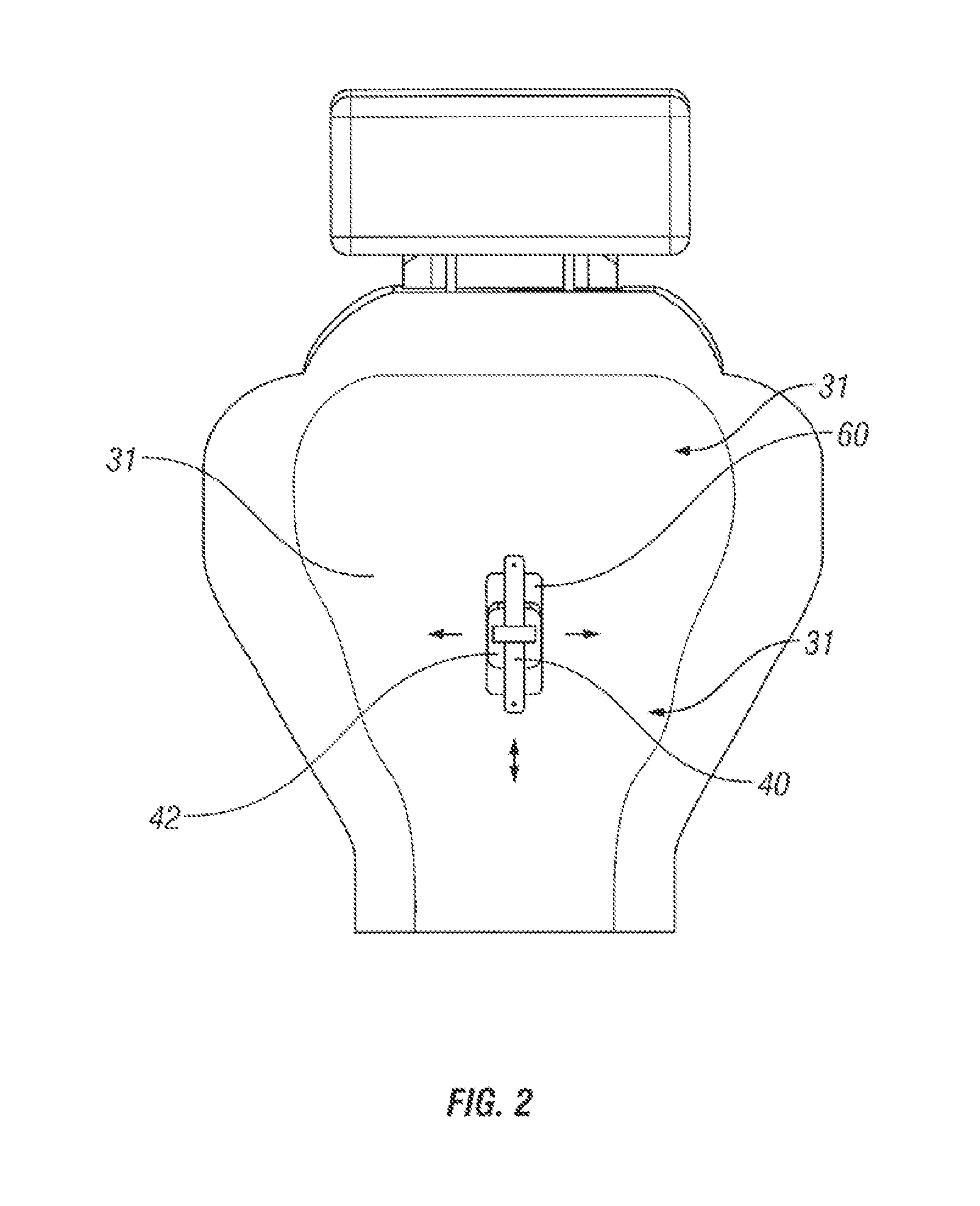Apparatus and method for facilitating or enhancing a person's breathing
a technology of breathing aids and apparatus, applied in the field of medical devices, can solve the problems of poor posture, patient slumping and sliding into uncomfortable and even dangerous positions, and deficient sensory and consciousness patients confined to hospital beds, operating tables, wheelchairs, etc., and achieve the effect of enhancing the lung capacity of the chest area, facilitating or enhancing the breathing of the person, and enhancing the lung capacity of the person's backbone/spin
- Summary
- Abstract
- Description
- Claims
- Application Information
AI Technical Summary
Benefits of technology
Problems solved by technology
Method used
Image
Examples
Embodiment Construction
[0023]This description of preferred embodiments is intended to be read in connection with the accompanying drawings, which are to be considered part of the entire written description of the invention. The drawing figures are not necessarily to scale and certain features of the invention may be shown exaggerated in scale or in somewhat schematic form in the interest of clarity and conciseness.
[0024]In the description, relative terms such as “top,”“rear,” front,”“bottom,”“horizontal,”“vertical,” and “diagonal” as well as derivatives thereof (e.g., “horizontally,”“downwardly,”“upwardly,”“rotationally,”“diagonally” etc.) should be construed to refer to the orientation as then described or as shown in the drawing figure under discussion. There relative terms are for convenience of description. Terms concerning attachments such as “connected,” and “interconnected,” refer to a relationship wherein structures are secured or attached to one another either directly or indirectly through inter...
PUM
 Login to View More
Login to View More Abstract
Description
Claims
Application Information
 Login to View More
Login to View More - R&D
- Intellectual Property
- Life Sciences
- Materials
- Tech Scout
- Unparalleled Data Quality
- Higher Quality Content
- 60% Fewer Hallucinations
Browse by: Latest US Patents, China's latest patents, Technical Efficacy Thesaurus, Application Domain, Technology Topic, Popular Technical Reports.
© 2025 PatSnap. All rights reserved.Legal|Privacy policy|Modern Slavery Act Transparency Statement|Sitemap|About US| Contact US: help@patsnap.com



